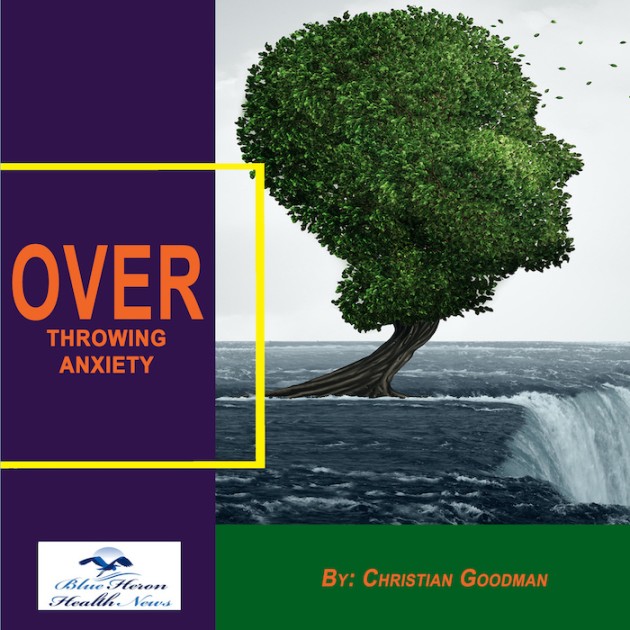
Overthrowing Anxiety™ This eBook includes a complete program to treat anxiety effectively. It guides you to learn the ways to find, understand, and accept the main cause of your anxiety and start using the techniques provided in it to treat the problem.
How does orthostatic hypotension cause dizziness?
Orthostatic hypotension causes dizziness by disrupting the body’s ability to regulate blood pressure when you change positions, particularly when standing up. Here’s how it works:
1. Blood Pressure Drop:
When you stand up, gravity causes blood to pool in your legs and lower body. To maintain blood flow to the brain and vital organs, your body typically responds by constricting blood vessels and increasing heart rate, which helps boost blood pressure. In people with orthostatic hypotension, this compensatory mechanism doesn’t work as efficiently. As a result, blood pressure drops quickly, causing a temporary reduction in blood flow to the brain.
2. Reduced Blood Flow to the Brain:
When blood pressure drops suddenly upon standing, the brain doesn’t receive enough oxygenated blood. This reduced blood flow leads to symptoms like dizziness, lightheadedness, or faintness, because the brain is not getting the nutrients and oxygen it needs to function normally.
3. Delayed Compensation:
In people with orthostatic hypotension, the body’s compensatory mechanisms are slower or less effective. Normally, the body would react within seconds to prevent dizziness, but in this condition, the blood pressure might remain low for a few moments, resulting in dizziness until the body catches up.
Why Dizziness Happens:
The dizziness comes from the brain temporarily receiving insufficient blood flow and oxygen. Your body is trying to adjust, but the delayed response causes that dizzy or lightheaded feeling. The longer it takes for the blood pressure to stabilize, the more pronounced the dizziness can be.
In summary:
The dizziness caused by orthostatic hypotension is due to the brain’s temporary lack of oxygenated blood when standing up, caused by a failure in the body’s normal compensatory mechanisms.
Managing orthostatic hypotension involves both lifestyle changes and, in some cases, medical treatment. Here are some strategies to help manage the condition:
1. Gradual Position Changes:
- Rise Slowly: When transitioning from lying down to sitting or from sitting to standing, do so slowly. This gives your body time to adjust to the change in position and prevents a sudden drop in blood pressure.
- Pause Before Standing: When you wake up or get out of a chair, sit for a moment before standing to let your body adjust.
2. Increase Fluid Intake:
- Drink More Water: Staying well-hydrated helps maintain blood volume, which can prevent blood pressure from dropping too low. Aim for at least 8 glasses of water a day, but consult your doctor for personalized recommendations.
- Electrolyte Solutions: Drinks with electrolytes (such as sports drinks) can also help by supporting fluid retention.
3. Increase Salt Intake (under medical supervision):
- Salt can help retain fluid in the body, which can raise blood pressure. However, this should be done carefully and only under the guidance of a doctor, especially if you have other conditions such as kidney disease or heart disease.
4. Wear Compression Stockings:
- Compression Garments: Wearing compression stockings or socks can help improve circulation and reduce blood pooling in the legs. They may be particularly helpful when standing for long periods of time.
5. Small, Frequent Meals:
- Avoid Large Meals: Large meals can lead to a drop in blood pressure after eating, which may worsen symptoms. Instead, try eating smaller, more frequent meals to maintain stable blood pressure.
6. Raise the Head of Your Bed:
- Elevate Your Bed: Sleeping with the head of your bed raised a few inches can help reduce the effects of orthostatic hypotension when you first stand up in the morning.
7. Physical Activity:
- Regular Exercise: Gentle, regular exercise like walking can improve circulation and cardiovascular health, which helps stabilize blood pressure.
- Leg Exercises: Before standing, try flexing your leg muscles to promote blood circulation in your lower body.
8. Medications (if necessary):
In some cases, if lifestyle changes alone aren’t sufficient, a doctor may prescribe medications to help raise blood pressure, such as:
- Fludrocortisone: A medication that helps the body retain sodium and increase blood volume.
- Midodrine: A drug that helps constrict blood vessels, raising blood pressure.
9. Avoid Alcohol:
- Limit Alcohol: Alcohol can lower blood pressure and worsen symptoms, so it’s important to drink it in moderation or avoid it if recommended by your doctor.
10. Monitor Blood Pressure:
- Regular Monitoring: Keep track of your blood pressure at different times of the day to ensure it’s within a healthy range and to identify any patterns or changes.
When to Seek Medical Attention:
If symptoms are severe or persistent, or if you’re experiencing fainting, chest pain, or shortness of breath, it’s important to consult a healthcare provider to rule out underlying conditions or to adjust treatment.
With the right approach, many people with orthostatic hypotension can manage their symptoms effectively and improve their quality of life.
Overthrowing Anxiety™ This eBook includes a complete program to treat anxiety effectively. It guides you to learn the ways to find, understand, and accept the main cause of your anxiety and start using the techniques provided in it to treat the problem.
